Abstract
Three individuals with severe intellectual disabilities participated in separate analyses of problem behavior. In each case, a functional analysis was conducted under two parallel conditions. In one condition, self-injury or aggression resulted in escape from difficult tasks; in the second condition, the same problem behavior resulted in access to preferred items. Results indicated that the problem behaviors for each participant were maintained by both types of contingencies. Functional communication training was then delivered first in one condition and then in the second. After each participant was trained in a functionally equivalent mode of communication for one condition, levels of problem behavior decreased in that condition but not in the untrained condition. Only after separate communication forms were trained in both conditions was problem behavior reduced to clinically acceptable levels. These results document three examples of problem behaviors under multiple control, and emphasize the need to organize interventions that address different contingencies of reinforcement that maintain the same problem behavior.
Full text
PDF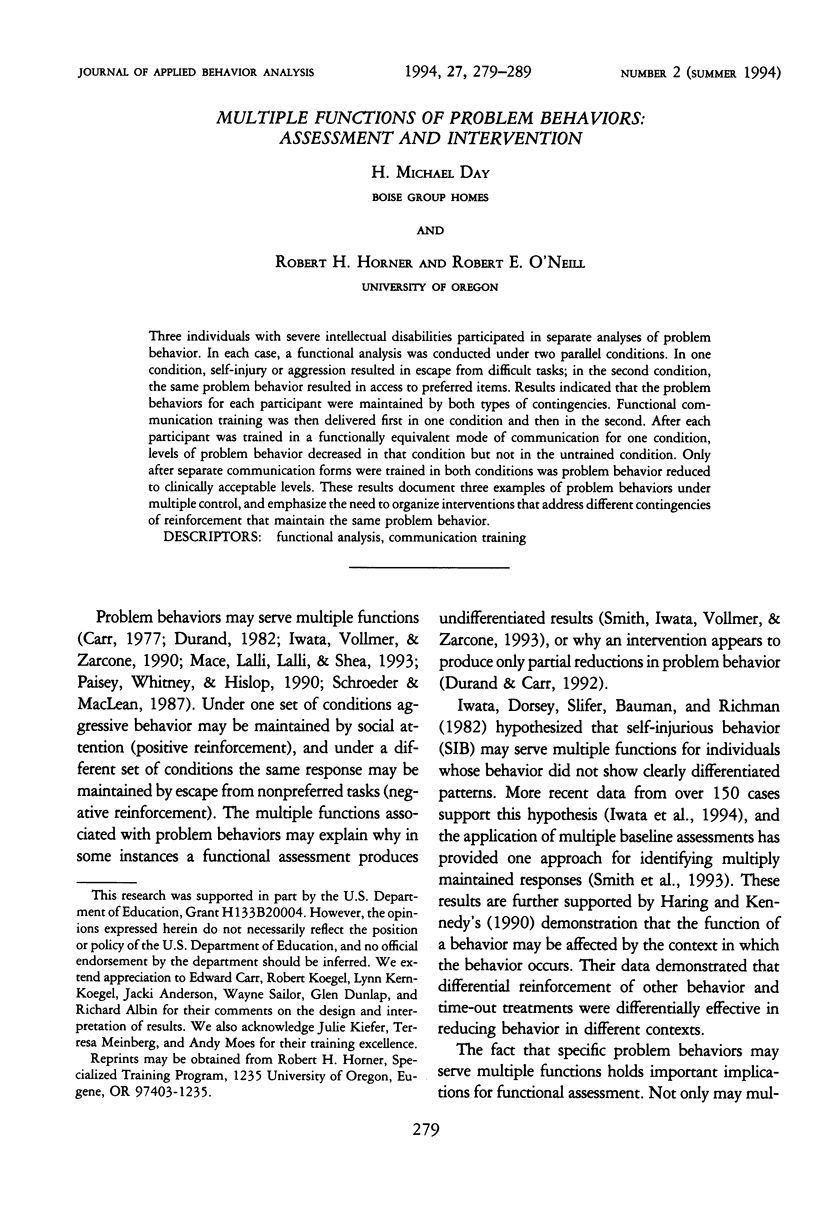
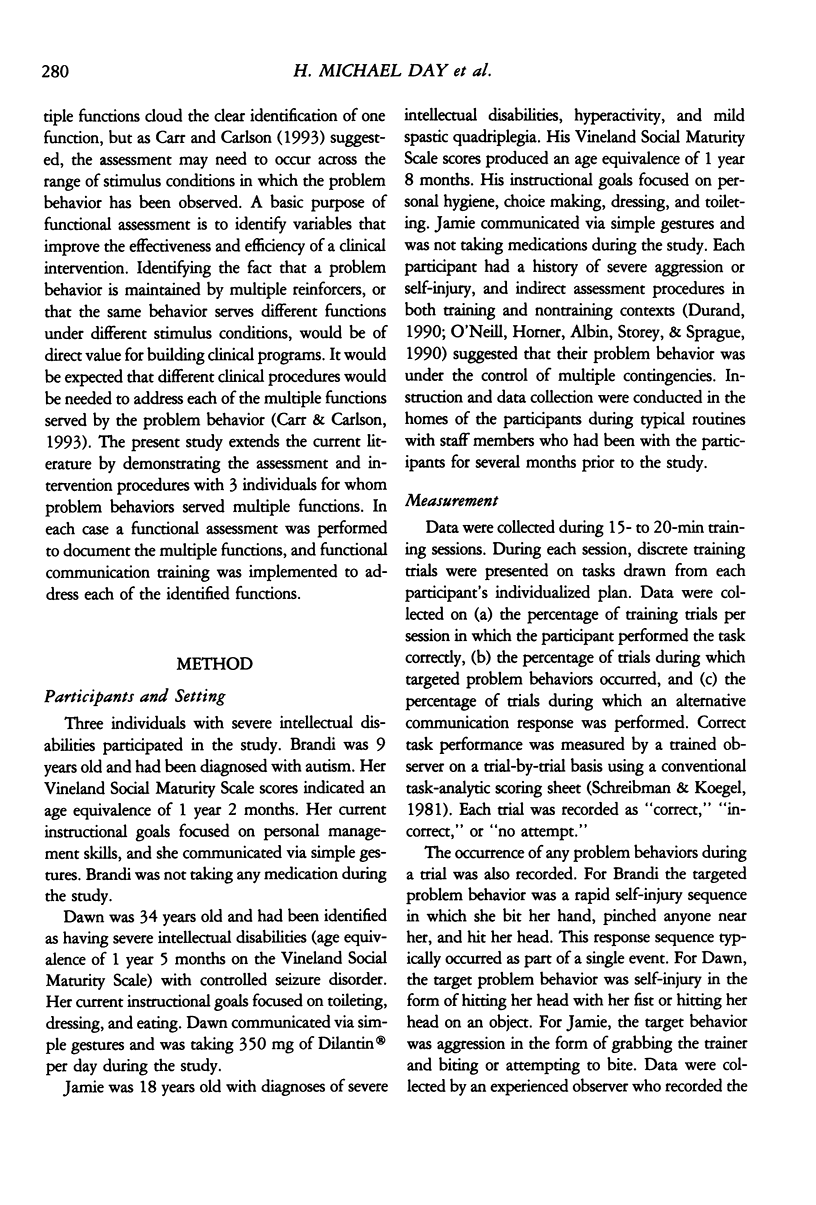
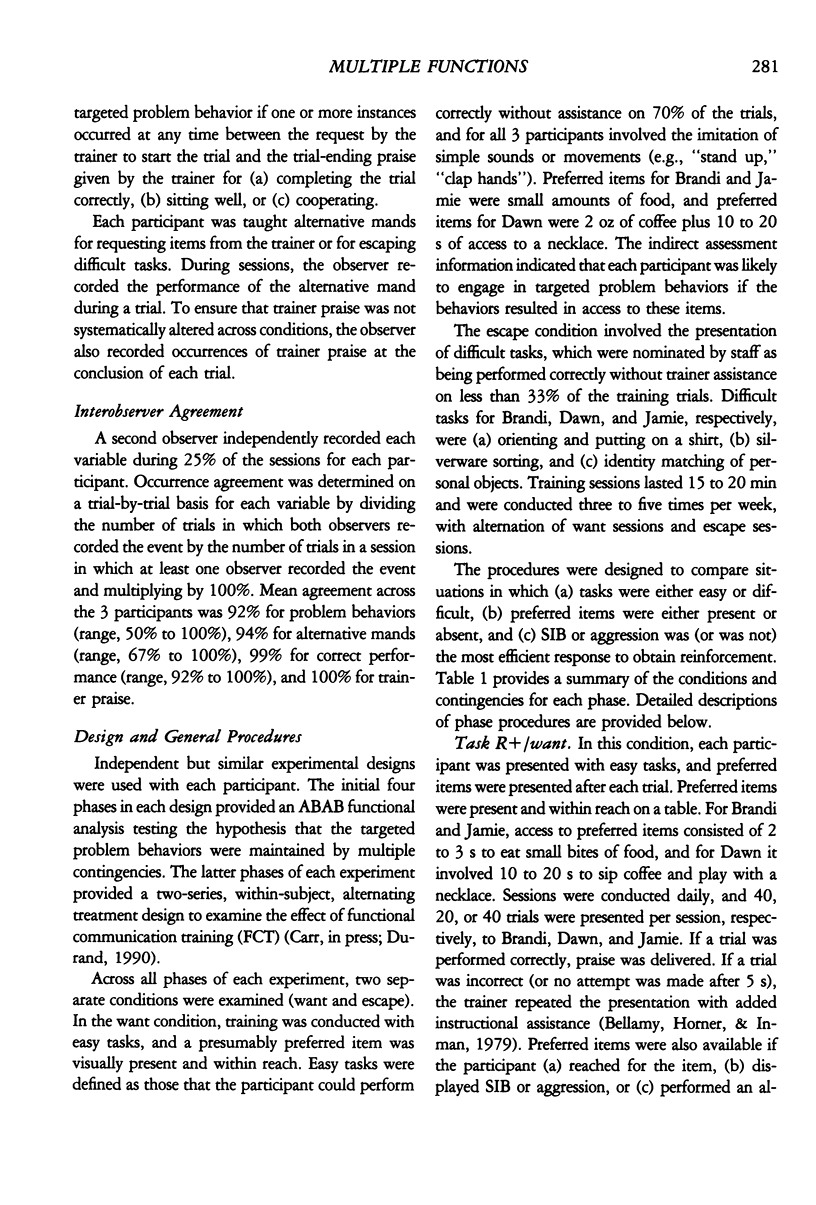
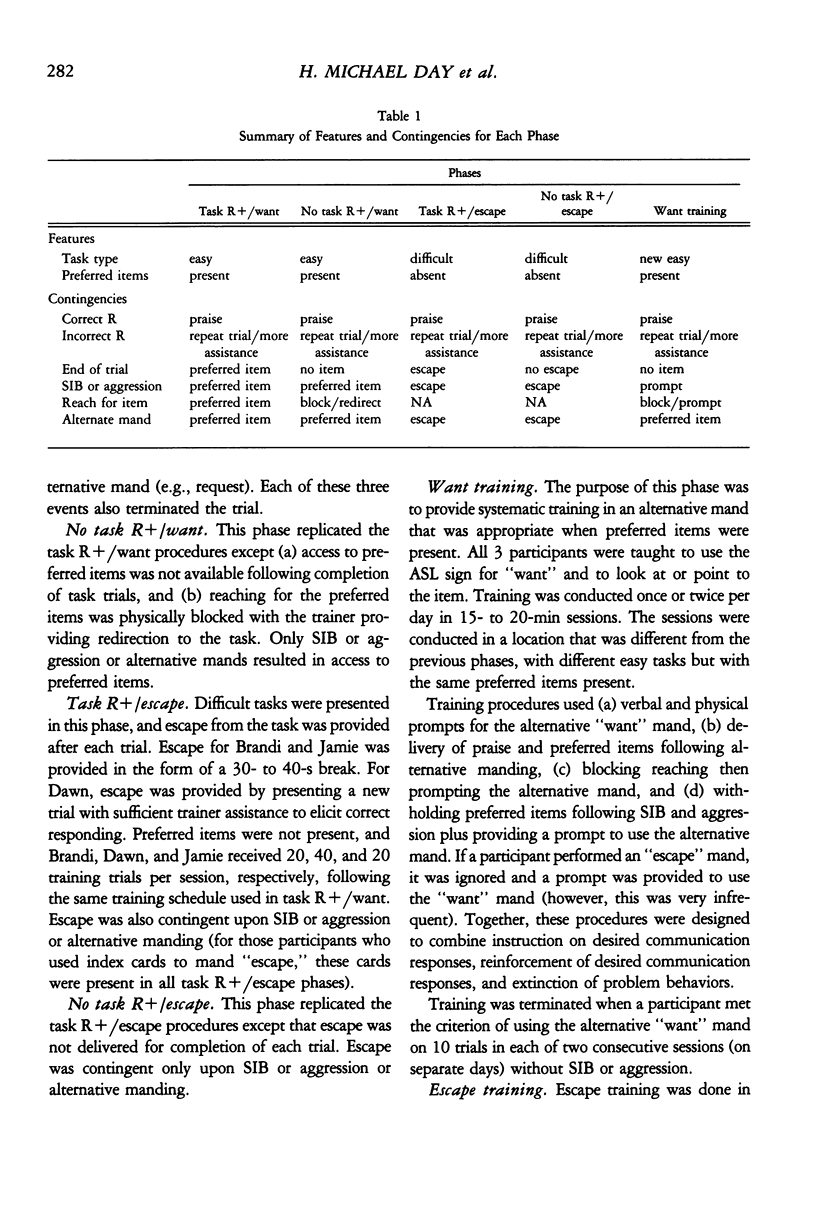

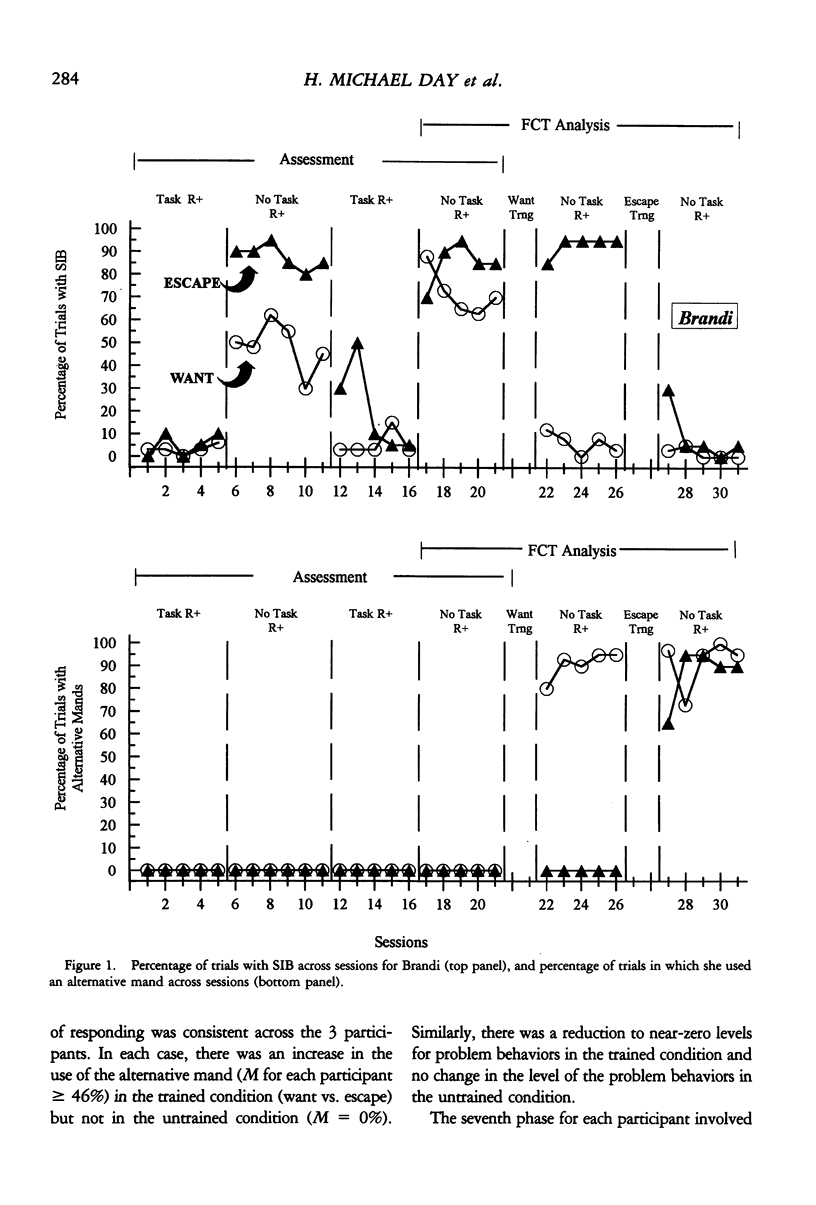
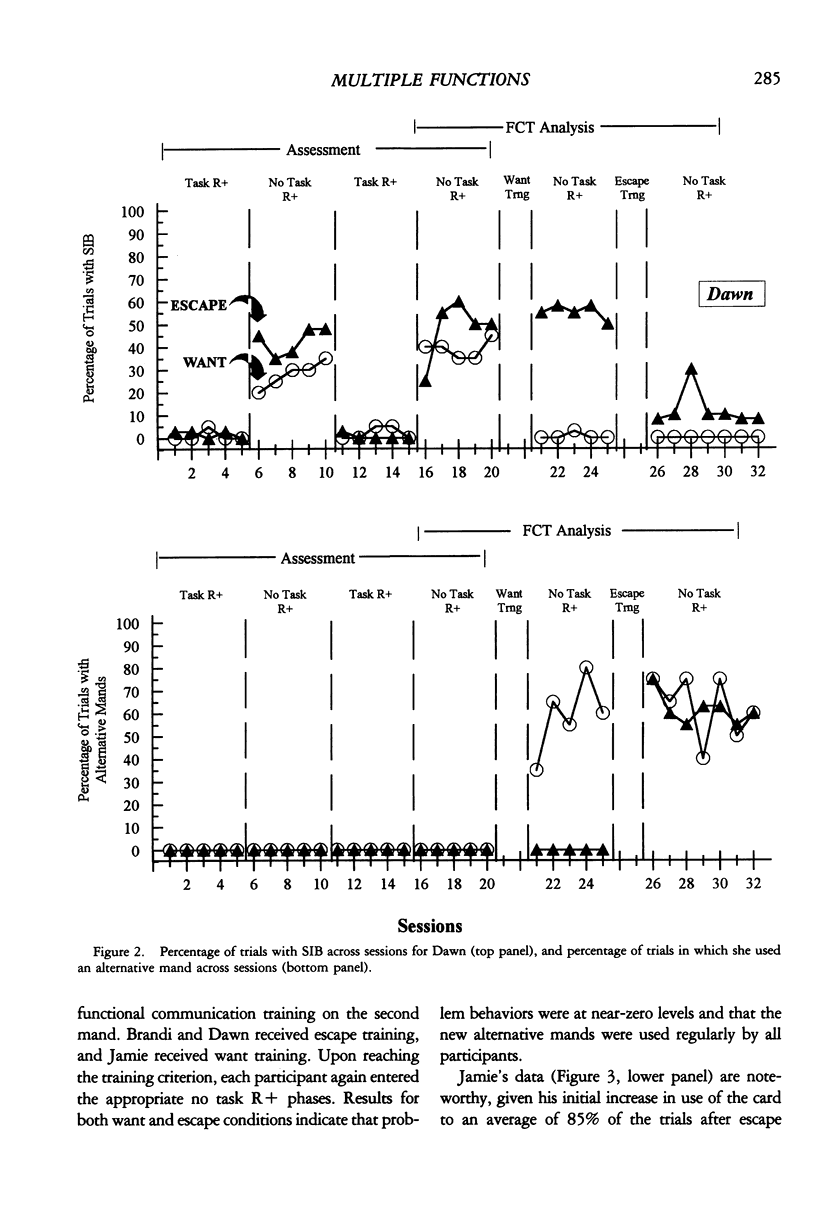
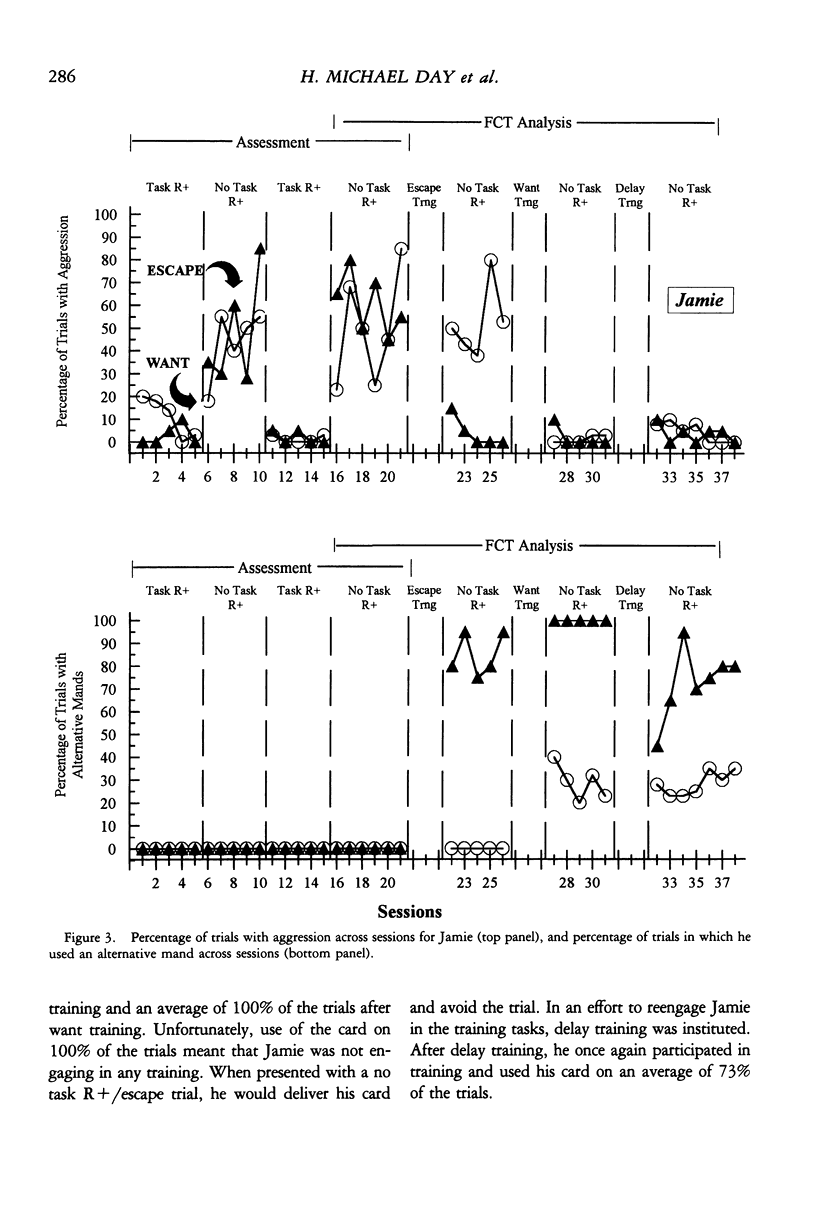
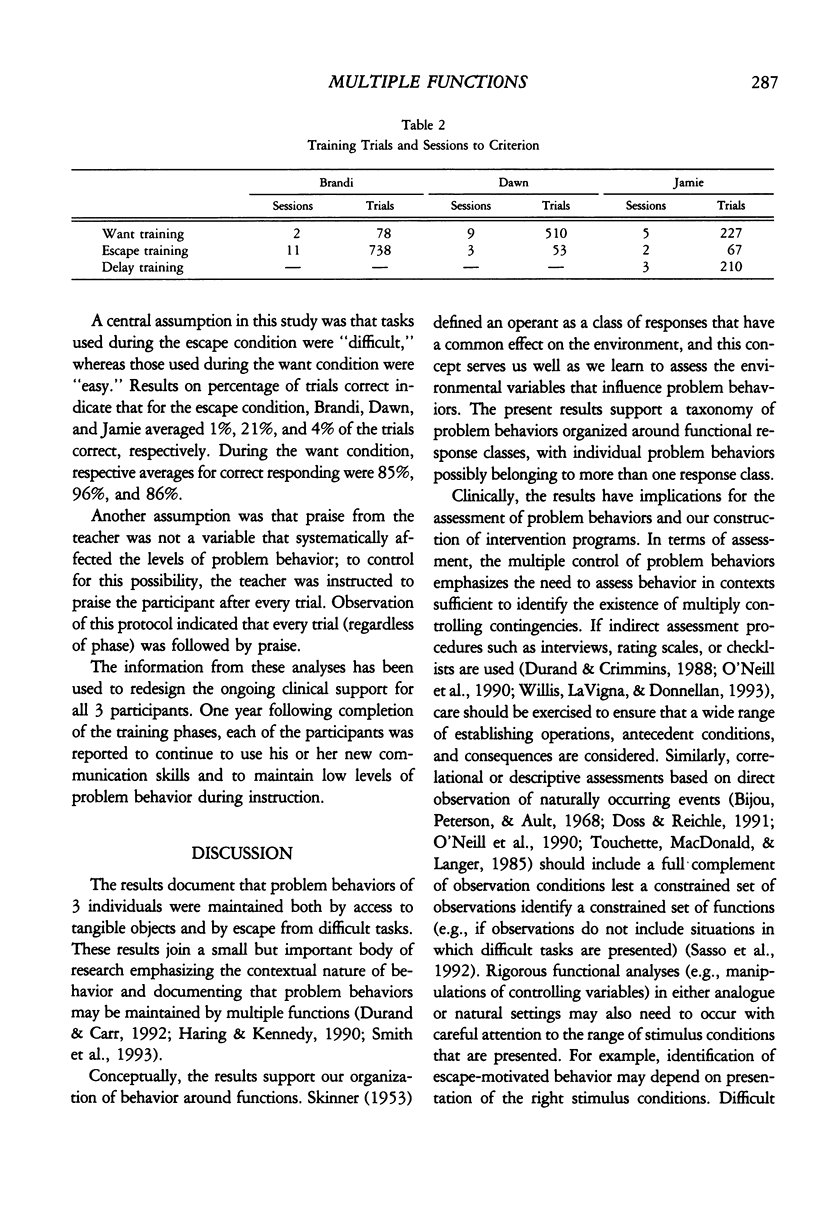

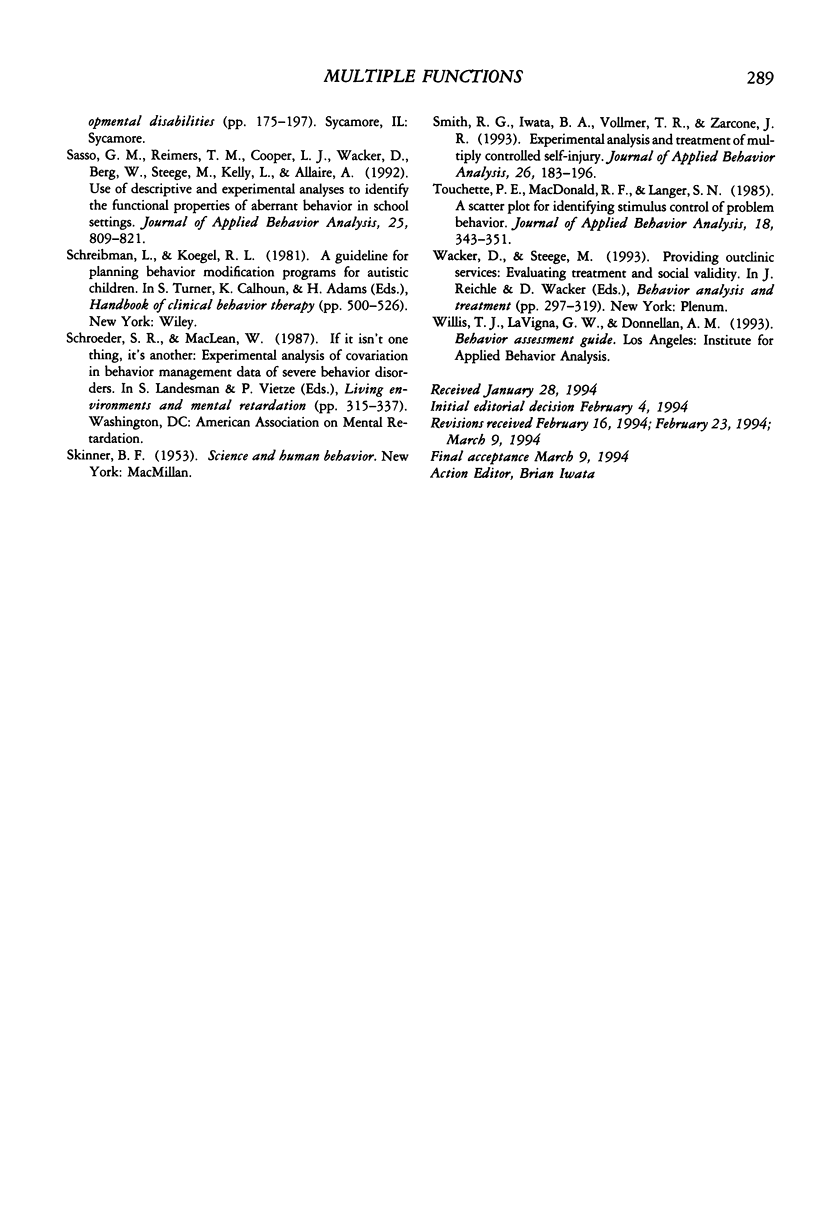
Selected References
These references are in PubMed. This may not be the complete list of references from this article.
- Bijou S. W., Peterson R. F., Ault M. H. A method to integrate descriptive and experimental field studies at the level of data and empirical concepts. J Appl Behav Anal. 1968 Summer;1(2):175–191. doi: 10.1901/jaba.1968.1-175. [DOI] [PMC free article] [PubMed] [Google Scholar]
- Carr E. G., Carlson J. I. Reduction of severe behavior problems in the community using a multicomponent treatment approach. J Appl Behav Anal. 1993 Summer;26(2):157–172. doi: 10.1901/jaba.1993.26-157. [DOI] [PMC free article] [PubMed] [Google Scholar]
- Carr E. G. The motivation of self-injurious behavior: a review of some hypotheses. Psychol Bull. 1977 Jul;84(4):800–816. [PubMed] [Google Scholar]
- Durand V. M., Carr E. G. An analysis of maintenance following functional communication training. J Appl Behav Anal. 1992 Winter;25(4):777–794. doi: 10.1901/jaba.1992.25-777. [DOI] [PMC free article] [PubMed] [Google Scholar]
- Durand V. M., Crimmins D. B. Identifying the variables maintaining self-injurious behavior. J Autism Dev Disord. 1988 Mar;18(1):99–117. doi: 10.1007/BF02211821. [DOI] [PubMed] [Google Scholar]
- Haring T. G., Kennedy C. H. Contextual control of problem behavior in students with severe disabilities. J Appl Behav Anal. 1990 Summer;23(2):235–243. doi: 10.1901/jaba.1990.23-235. [DOI] [PMC free article] [PubMed] [Google Scholar]
- Iwata B. A., Pace G. M., Dorsey M. F., Zarcone J. R., Vollmer T. R., Smith R. G., Rodgers T. A., Lerman D. C., Shore B. A., Mazalesk J. L. The functions of self-injurious behavior: an experimental-epidemiological analysis. J Appl Behav Anal. 1994 Summer;27(2):215–240. doi: 10.1901/jaba.1994.27-215. [DOI] [PMC free article] [PubMed] [Google Scholar]
- Millard T., Wacker D. P., Cooper L. J., Harding J., Drew J., Plagmann L. A., Asmus J., McComas J., Jensen-Kovalan P. A brief component analysis of potential treatment packages in an outpatient clinic setting with young children. J Appl Behav Anal. 1993 Winter;26(4):475–476. doi: 10.1901/jaba.1993.26-475. [DOI] [PMC free article] [PubMed] [Google Scholar]
- Sasso G. M., Reimers T. M., Cooper L. J., Wacker D., Berg W., Steege M., Kelly L., Allaire A. Use of descriptive and experimental analyses to identify the functional properties of aberrant behavior in school settings. J Appl Behav Anal. 1992 Winter;25(4):809–821. doi: 10.1901/jaba.1992.25-809. [DOI] [PMC free article] [PubMed] [Google Scholar]
- Smith R. G., Iwata B. A., Vollmer T. R., Zarcone J. R. Experimental analysis and treatment of multiply controlled self-injury. J Appl Behav Anal. 1993 Summer;26(2):183–196. doi: 10.1901/jaba.1993.26-183. [DOI] [PMC free article] [PubMed] [Google Scholar]
- Touchette P. E., MacDonald R. F., Langer S. N. A scatter plot for identifying stimulus control of problem behavior. J Appl Behav Anal. 1985 Winter;18(4):343–351. doi: 10.1901/jaba.1985.18-343. [DOI] [PMC free article] [PubMed] [Google Scholar]


